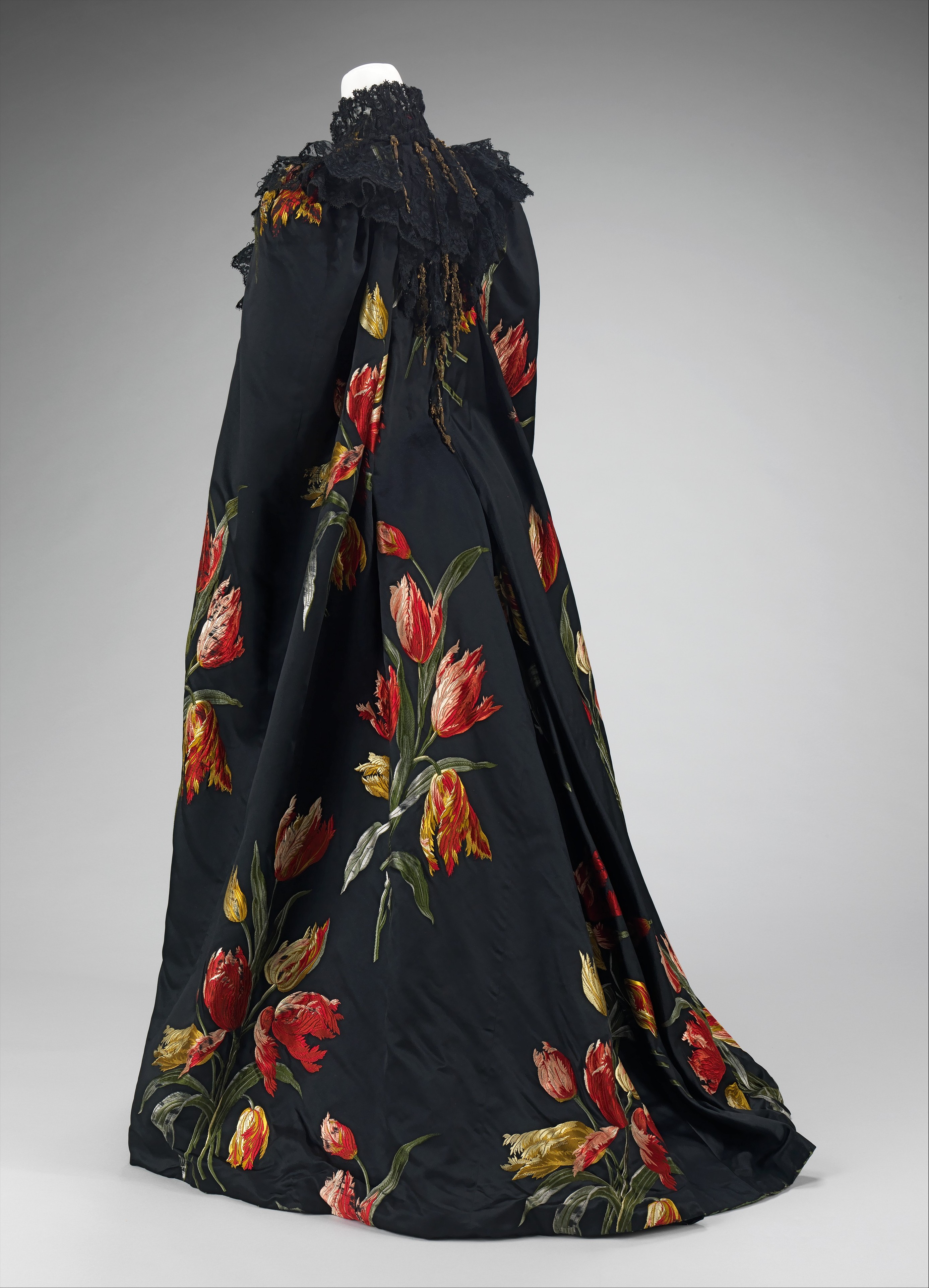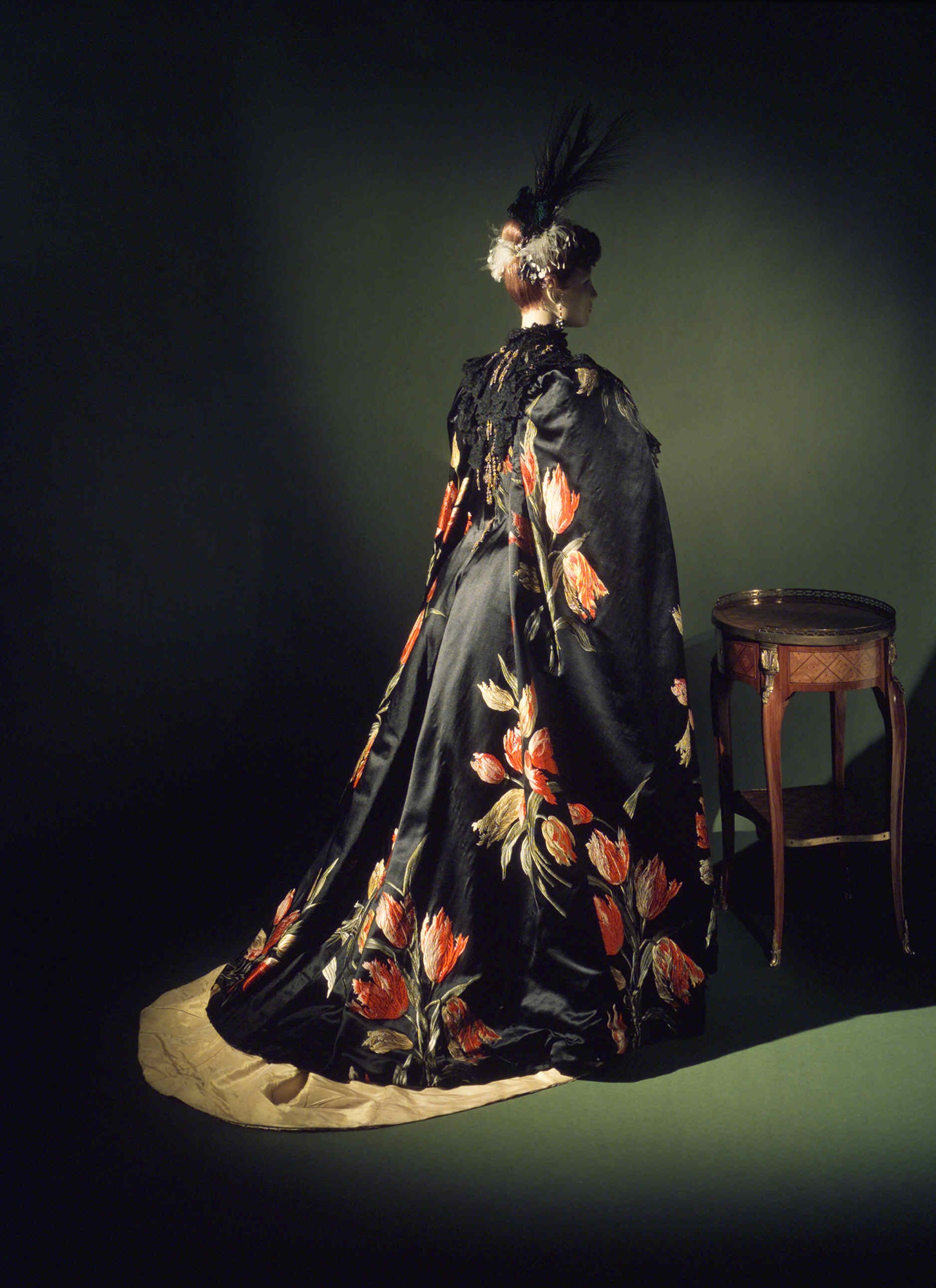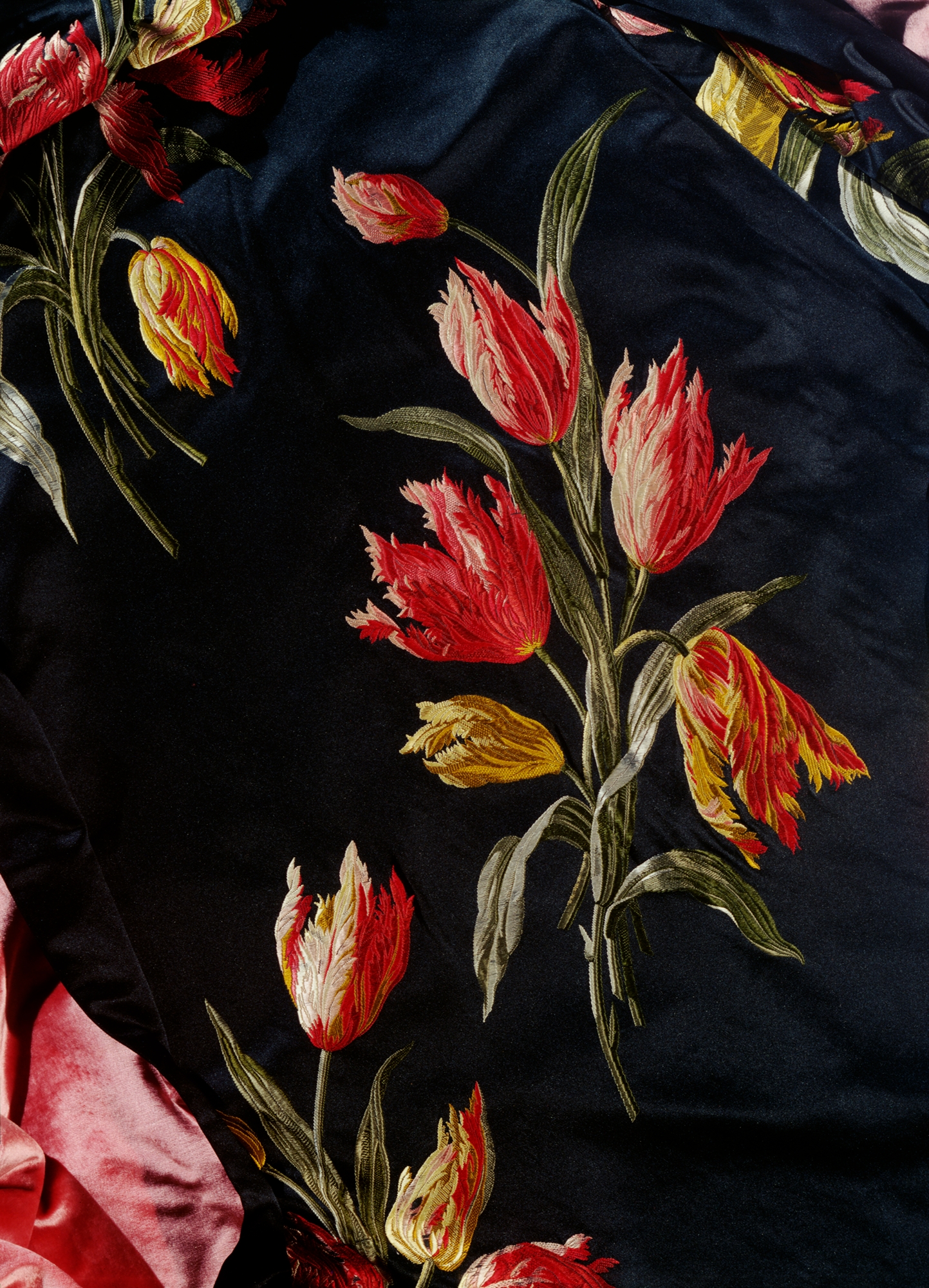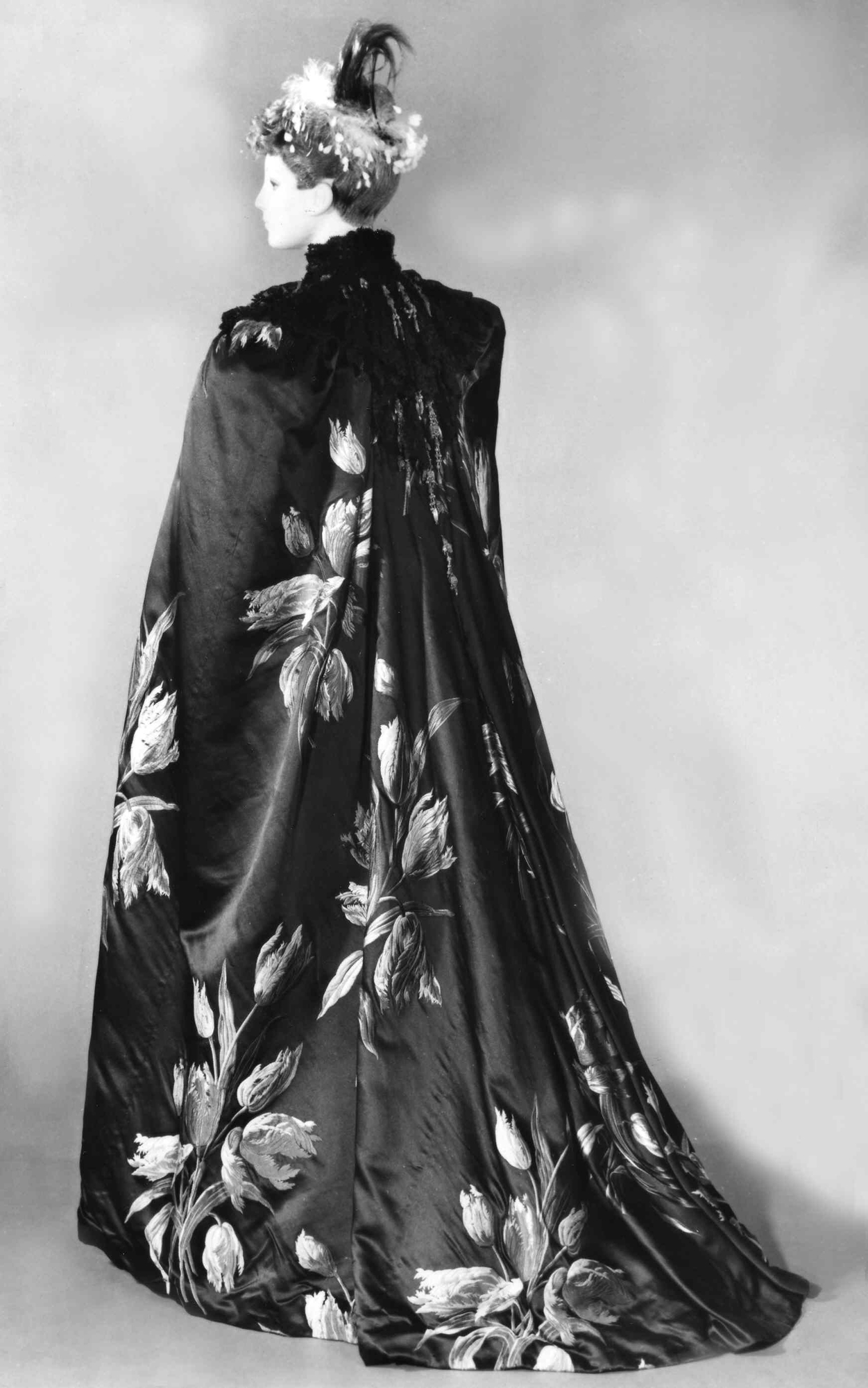"Tulipes Hollandaises" (textile)
Not on view
Worth was constantly interested in supporting the textile industry as evidenced in this cape, which is designed to showcase its textile to the extreme. The textile itself has a repeat which is over three feet long making it stunning but also making it extremely difficult to weave. The dramatic fabric, "Tulipes Hollandaises," was exhibited at the Exposition Universelle of 1889 in Paris and won a grand prize. The tulips have an aggressive dynamic quality about them with the brilliant, vibrant colors against the deep black background consistent with the seductive femme fatale sensibility of the 1880s and 1890s.
Charles Frederick Worth was born in England and spent his young adulthood working for textile merchants in London while researching art history at museums. In 1845 he moved to Paris and worked as a salesman and a dressmaker before partnering with Otto Bobergh to open the dressmaking shop, Worth and Bobergh, in 1858. They were soon recognized by royalty and major success followed. In 1870 Worth became the sole proprietor of the business. At his shop, Worth fashioned completed creations which he then showed to clients on live models. Clients could then order their favorites according to their own specifications. This method is the origin of haute couture. Worth designed gowns which were works of art that implemented a perfect play of colors and textures created by meticulously chosen textiles and trims. The sheer volume of the textiles he employed on each dress is testimony to his respect and support of the textile industry. Worth's creative output maintained its standard and popularity throughout his life. The business continued under the direction of his sons, grandsons and great-grandsons through the first half of the twentieth century.
Due to rights restrictions, this image cannot be enlarged, viewed at full screen, or downloaded.
This artwork is meant to be viewed from right to left. Scroll left to view more.







